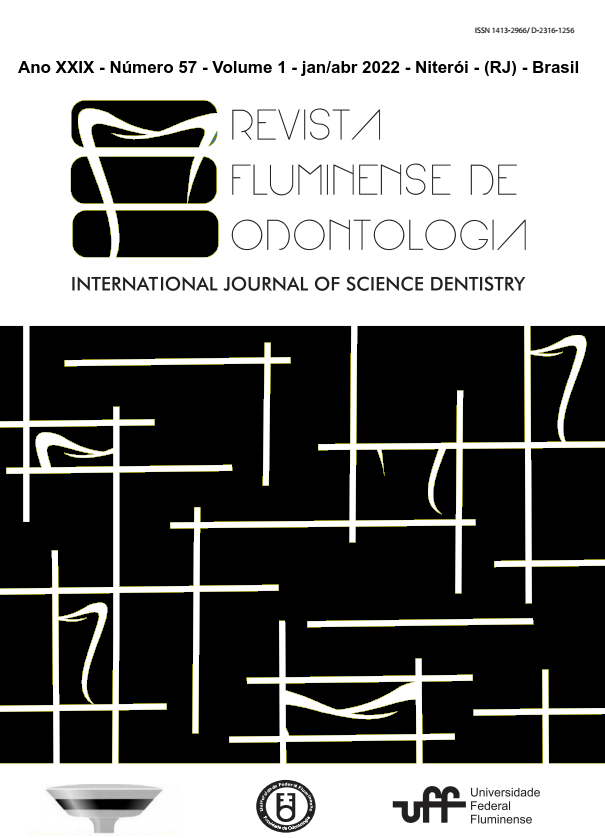IS THE KERATINIZED MUCOSA ATTACHED IMPORTANT FOR PERI- IMPLANT HEALTH? A DISCUSSION CRITIC OF LITERATURE
DOI:
https://doi.org/10.22409/ijosd.v1i57.52845Abstract
The oral gingiva can be divided into attached or free. The attached gingiva is keratinized and is of great importance in protecting the periodontium against inflammation, being also important in mechanical protection during brushing and biofilm accumulation. A range of keratinized mucosa is important for the health of periodontal tissues. Peri-implant tissues have an appearance and structures similar to the epithelium around the teeth. The keratinized mucosa range around the peri-implant area of 1 to 2 mm can reduce plaque accumulation and consequently peri-implantitis, which is one of the factors responsible for implant loss. Several techniques have been used to increase this range of keratinized gingiva, favoring an increase in the success rate of implant installations such as: free gingival grafts, connective tissue, acellular dermal matrix, collagen matrix, membranes, and immediate implants. instead of the common technique. The aim of the present study was to discuss, based on the scientific literature, the anatomical characteristics of the keratinized attached mucosa around implants and their importance for peri-implant health. For the development of the proposed study of literature review, searches were carried out on different platforms of bibliographic databases, namely: Scielo (scientific Electronic Library online), PubMed and Google Scholar and reference books in Periodontics. Based on the critical review performed, it was concluded that when there is a keratinized mucosa adhered around the implant greater than 1mm, the implants present better biological sealing, less biofilm accumulation and low risk for peri-implantitis.
Keywords: Keratinized mucosa attached; Implant; Peri-implant Keratinized Mucosa; Peri-implant heathy





